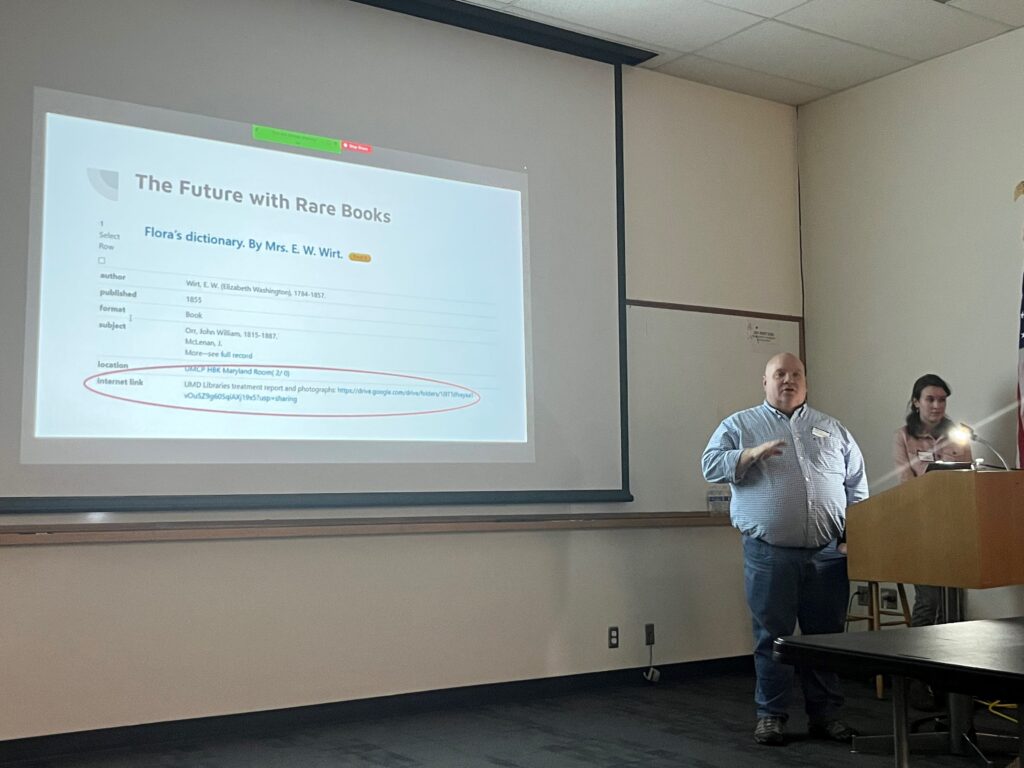Ring 3: MAKING CONNECTIONS
“Utilizing Existing Infrastructure to Enhance the Archivist/Conservator Relationship”
Presented by Mark Coulbourne, Preservation Librarian at the University of Maryland and Bethany Greenho, Preservation Graduate Assistant at the University of Maryland
Summarized by Sydney Collins, Conservation Contractor at the National Museum of the American Indian
In this presentation, Mark Coulbourne, Preservation Librarian, and Bethany Greenho, Preservation Graduate Assistant, discuss how they harnessed features of University of Maryland’s existing digital infrastructure to improve accessibility of preservation and conservation records. Prior to 2019, preservation and conservation records at UMD were stored on network drive and in order for staff curators and archivists to view these records they had to be retrieved and disseminated by the preservation department. To relieve this bottle neck, Mark and Bethany began to consider ways to make this pertinent collections information more readily available to their colleagues in other departments.

Inspired by some of Sharon Fickeissen’s work at the Hagley Museum and Library, UMD preservation staff considered ways they could utilize their own ArchiveSpace platform to meet this need. Building on Fickeissen’s work, UMD elected to utilize the ‘events’ feature of ArchiveSpace to create connections between archival collection holdings and their respective preservation records. Information regarding the dates, length of time, and cost of treatment were entered into associated event records, and a Google Drive link was embedded within the record to direct users to copies of preservation documentation. This allowed curators and archive staff to immediately see if certain collection material had been worked on in the past.
Mark and Bethany finished their presentation by noting ways this ArchiveSpace Events feature could also enhance access to preservation records for the public. They completed a small number of test cases where a pared-down version of the treatment was linked to the online, public facing collections search. This would allow outside researchers and the general public to see how their tax dollars were being spent on the preservation of UMD’s library collections. The full roll-out of this public facing feature is currently an overhaul of their ILS system is complete in 2024. Overall, this was an illuminating example of how an institution under considerable budget constraints was able to look inward to devise a creative solution to improve the accessibility of preservation and conservation records.